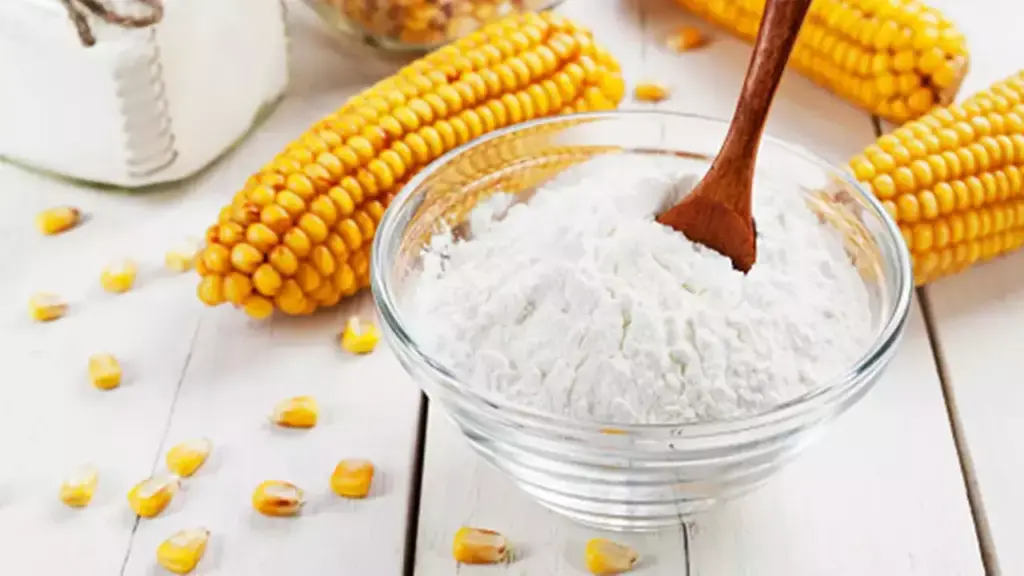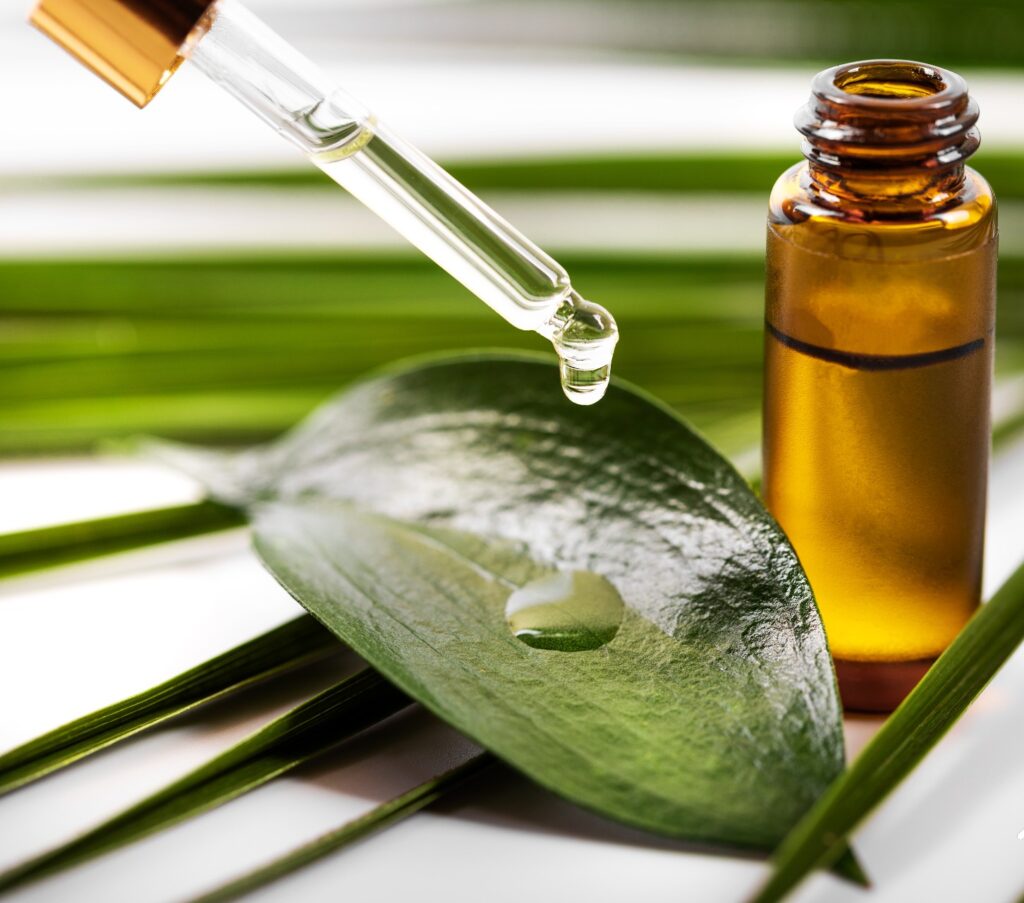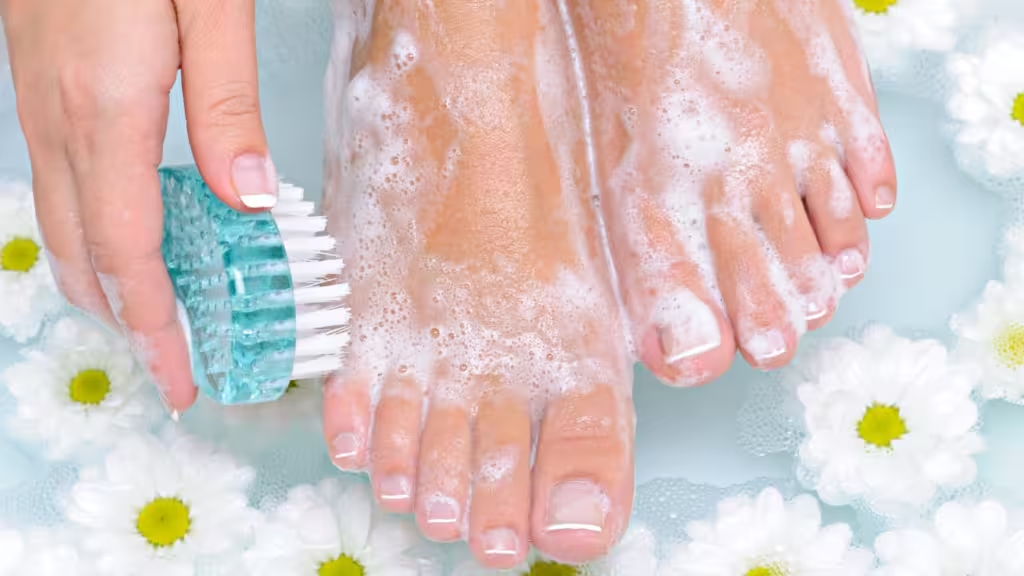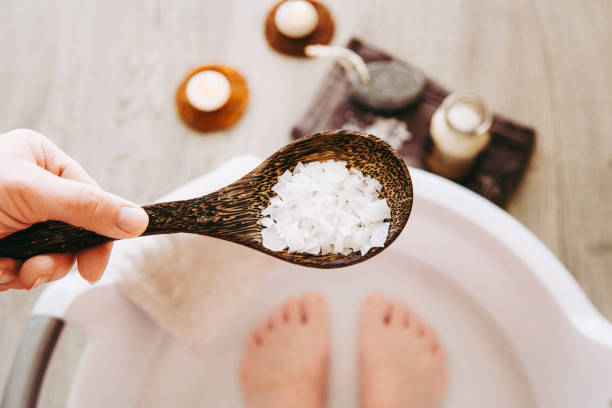Athlete’s foot, a common fungal infection affecting 3 to 15 percent of the population annually, is among the most prevalent fungal infections worldwide. Its occurrence is widespread, with up to 25 percent of individuals experiencing symptoms at some point in their lives.
Similar to other fungal infections like toenail fungus, jock itch, and ringworm, athlete’s foot thrives in warm, moist environments, such as sweaty or unclean feet. Men are more susceptible to this condition compared to women, particularly those who frequent shared spaces or wear tight, non-breathable footwear. While athlete’s foot symptoms may resolve spontaneously, treatment is typically necessary to alleviate itching, flaking, and redness.
What Is Athlete’s Foot?
Athlete’s foot, caused by fungi known as tinea pedis, is a common infection affecting the toes or feet. These fungi thrive on the protein keratin, which is abundant in the skin’s top layer and within hair strands.
Symptoms of athlete’s foot typically manifest in areas such as the spaces between the toes, particularly the gap between the little toe and its neighbor. Additionally, individuals may experience symptoms across the bottom of the foot, as well as on the soles and heels, in cases of moccasin athlete’s foot.
Common Signs
The most common signs include:
- Itchiness and burning sensation around the toes.
- Dry, cracked, or flaky skin on the toes.
- Skin may appear white or red, with severe cases possibly exhibiting a greenish hue between the toes.
- Swelling, thickening of the skin, and pain, particularly in more severe cases.
- Occasionally, a foul odor emanating from the feet.
- In severe instances, ulcers or blisters may develop, typically on the bottom of the feet with moccasin athlete’s foot.
- Untreated cases may lead to spreading to the toenails or even the hands and fingers, resulting in symptoms such as nail discoloration, chipping, itching, redness, and potential bacterial infection.
Home Remedies
1. Cornstarch Treatment for Athlete’s Foot
Combat athlete’s foot naturally with a simple yet effective remedy using cornstarch, a common kitchen staple derived from corn. By absorbing excess moisture from your feet, cornstarch helps inhibit the spread of fungal infections, promoting healing and relief.
Ingredients:
- Cornstarch

Instructions:
- Wash and thoroughly dry your feet before applying the treatment.
- Sprinkle a generous amount of cornstarch directly onto your toes and the affected areas.
- Gently massage the cornstarch into the skin, ensuring thorough coverage.
- Repeat this process daily, especially after showering or any activity that causes sweating.
Incorporate cornstarch into your daily routine to effectively manage and alleviate athlete’s foot symptoms. With its natural ability to absorb moisture and combat fungal growth, cornstarch offers a simple yet powerful solution for healthier, happier feet.
2. Harness the Power of Tea Tree Oil

Tea tree oil, renowned for its potent antifungal properties, stands as a formidable natural remedy in the fight against athlete’s foot. Sourced from the leaves of the Australian tea tree (Melaleuca alternifolia), this essential oil has garnered attention for its extensive therapeutic potential, particularly in addressing various fungal infections. Over years of research and practical application, tea tree oil has emerged as a trusted ally in the realm of natural footcare, offering a multifaceted approach to combatting fungal ailments effectively and safely.
Ingredients:
- Tea Tree Oil
Instructions:
- Begin by thoroughly cleansing and drying your feet to prepare them for treatment.
- Directly apply tea tree oil to the affected areas on your skin and nails.
- Repeat this process once or twice daily until the infection has cleared completely.
Incorporating natural remedies like tea tree oil into your footcare routine can help alleviate discomfort and effectively treat common conditions such as athlete’s foot. By following simple yet effective steps and utilizing the power of nature’s healing properties, you can maintain healthy, happy feet for years to come.
3. Maintain Foot Hygiene
Maintaining impeccable foot hygiene is paramount in safeguarding against fungal infections such as athlete’s foot. Implementing a comprehensive regimen of foot care ensures that your feet remain clean, dry, and adequately protected against microbial threats. By adhering to these essential guidelines, you can fortify your defense against fungal ailments and promote overall foot health:

- Wash and Dry Feet Thoroughly: After exposure to moisture or shared surfaces, meticulously wash and dry your feet to remove any bacteria or fungi. Use a clean towel or a hair dryer on a low setting to absorb excess moisture before putting on socks and shoes.
- Avoid Sharing Personal Items: To prevent the spread of infections, refrain from sharing razors, towels, shoes, or socks, particularly if someone has had a recent infection. Keep personal hygiene items separate to minimize the risk of contamination.
- Wear Clean, Dry Socks: Opt for clean, dry socks made of breathable materials. Launder socks regularly in warm water with natural laundry detergent to eliminate harmful bacteria and fungi.
- Allow Feet to Breathe: When at home, let your feet breathe by walking barefoot or wearing open-toed shoes. This helps prevent moisture buildup, especially if you wear waterproof footwear for extended periods.
- Choose Comfortable Shoes: Avoid wearing tight, constrictive shoes that can trap moisture and promote fungal growth. Opt for well-fitted shoes with ample room for your toes to prevent discomfort and minimize the risk of infection.
- Care for Cuts and Scrapes: Treat any cuts or scrapes on your feet promptly by cleaning them thoroughly and applying a protective bandage. Proper wound care reduces the risk of infection and promotes faster healing.
- Rotate Shoes: If you’ve experienced athlete’s foot multiple times, rotate your shoes regularly to allow them to air out between uses. Avoid wearing the same pair of shoes two days in a row and always wear clean socks to maintain foot hygiene.
- Use Flip-Flops in Public Areas: When showering in communal facilities or walking around public pools, gyms, bathrooms, or changing rooms, wear flip-flops to protect your feet from potential sources of infection. Minimize barefoot exposure to reduce the risk of contracting fungal infections like athlete’s foot.
4. Baking Soda and Thymus Oil Foot Soak

Indulge in a rejuvenating foot soak with this invigorating blend of baking soda and thymus essential oil. Crafted to soothe and protect your feet, this simple yet effective remedy offers relief from fungal infections and leaves your skin feeling refreshed and revitalized.
Ingredients:
- 2 tbsp baking soda
- 1 mug of lukewarm water
- 10 drops of thymus essential oil
- 3 tbsp apple cider vinegar
Instructions:
- In a large tub, combine the baking soda, lukewarm water, thymus essential oil, and apple cider vinegar.
- Stir the ingredients thoroughly using a ladle to ensure proper mixing.
- Submerge your feet in the solution and soak for 15-20 minutes, allowing the blend to work its magic.
- After soaking, gently towel dry your feet and follow up with a moisturizer for added hydration.
Experience the soothing benefits of this baking soda and thymus oil foot soak as it combats fungal infections and restores vitality to your tired feet. With its potent antifungal properties and refreshing aroma, this remedy provides a rejuvenating experience that promotes overall foot health and wellness.